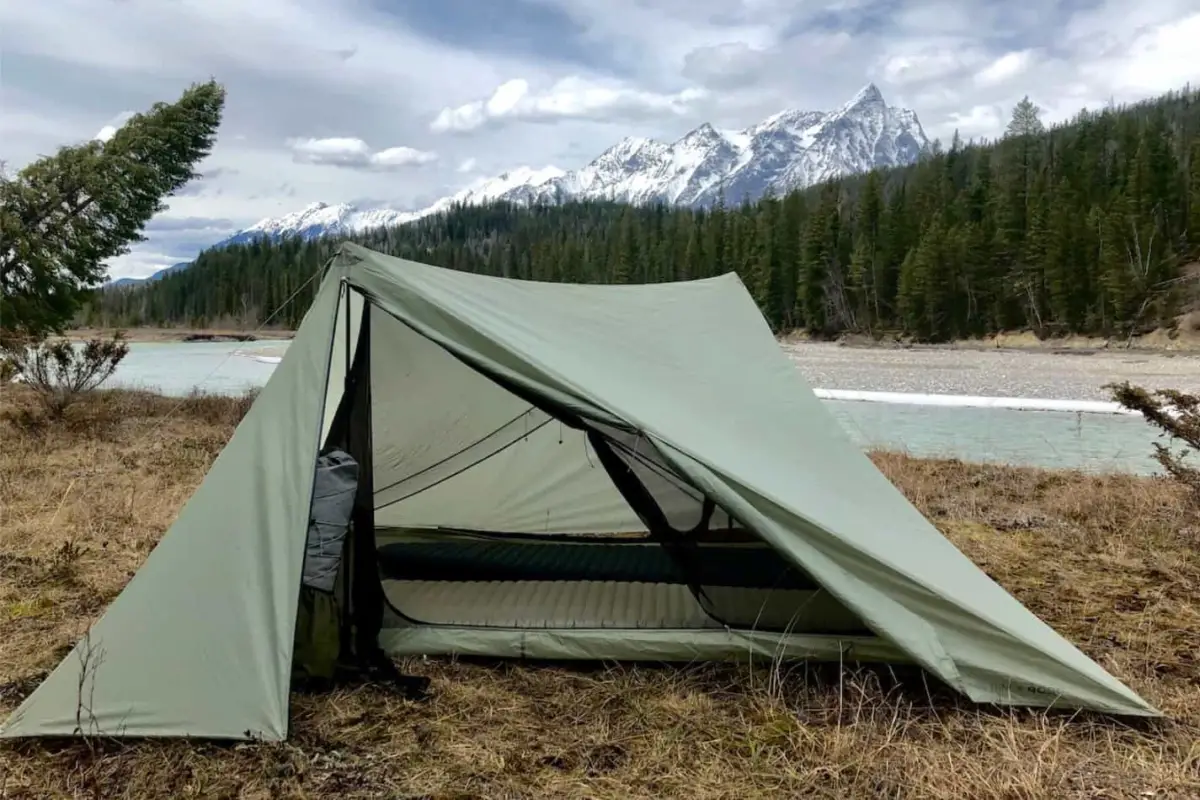Many may feel intimidated by a trekking pole tent as they have no initial structure that poles would typically provide you to set up your tent easily, but this comes with the benefit of dropping weight and making your trekking poles a multi-use gear item.
I felt the same way the first time I purchased my Lanshan 2 tent, but setting it up in the backyard was beyond easy. Don’t get me wrong, there was some learning I had to do prior, but now I would never carry a tent with poles as I don’t want to carry single-use items!
The trekking pole tent can help you quickly reach that sub-2 pound weight for most thru-hikers and make for a much lighter backpack, quickly dropping a pound or more for some learning and setup work.
As an Amazon Associate, I earn from qualifying purchases on our website. In addition, we include many other affiliates’ offers on the site.
Instantaneous Recommendations
Quick Trekking Pole Tent Comparison
| Shelter | Capacity | Materials | Weight | Check It Out |
|---|---|---|---|---|
| Zpacks Duplex | 2 Person | DCF | 18.5 oz / 525 g | Check Price |
| Plex Solo | 1 Person | DCF | 13.9 oz / 395 g | Check Price |
| Durston Gear X-Mid Pro 2 | 2 Person | DCF | 18.2 oz / 515 g | Check Price |
| Durston Gear X-Mid Pro 1 | 1 Person | DCF | 15.7 oz / 445 g | Check Price |
| HMG Mid 1 | 1 Person | DCF | 16.8 oz / 476 g | Check Price |
| HMG Unbound 2P | 2 Person | DCF | 24.0 oz / 680 g | Check Price |
| Gossamer Gear ‘The Two’ | 2 Person | SilNylon | 23.5 oz / 667 g | Check Price |
| TarpTent StratoSpire 2 | 2 Person | SilPoly | 43.8 oz / 1242 g | Check Price |
| TarpTent Aeon Li | 1 Person | DCF | 19.15 oz / 543 g | Check Price |
| TarpTent Notch | 1 Person | SilPoly | 27.95 oz / 792 g | Check Price |
| 3F UL Gear Lanshan 2P | 2 Person | SilNylon | 43 oz / 1220 g | Check Price |
My Choice for Best Trekking Pole Tents for Thru-Hiking
Now that you have seen my list of the top thru-hiking trekking pole tents, let’s dig into each and explain why I chose to rate them there and why they may be a perfect match for you and your long-distance hike.
Zpacks Duplex
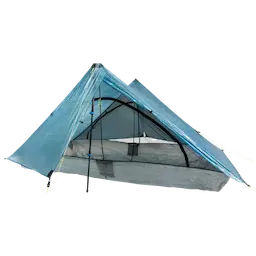
- The Zpacks Duplex Tent is an excellent tent for thru-hiking due to its weight and waterproof fabrics. It only weighs 19.4 ounces and is made of Dyneema Composite Fabrics.
- The Duplex has two doors, two vestibules, and needs the use of two trekking poles. Despite its amazing layout and design, the Duplex is a very simple tent to put up and use, which is probably why it’s arguably the most popular tent on trail.
The Duplex is a lightweight, high-strength, highly waterproof fabric that makes it ideal for making tents and shelters since it does not absorb water or stretch at night. The fabric is called Dyneema Composite Fabrics (DCF), a lightweight, high-strength, highly waterproof fabric that makes it perfect for this use.
While the Duplex is a two-person tent for thru-hikers on the trail this is a one-person with space to spread out on the trail. Having space to layout gear and move around is highly valued when you are truly living on the trail, and just like a house, a little more space is never a bad thing.
This is a single-wall tent which does mean you will face condensation internally and possible water drips overnight if the ceiling should shake more move a lot; some people find this a big downside to a single wall tent and a reason why they don’t purchase a DCF tent as this are very commonly single-wall constructs.
Zpacks Plex Solo
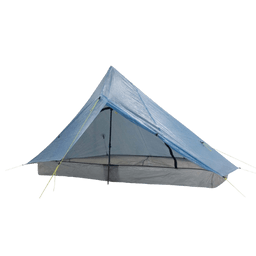
- The Plex Solo is the ideal ultralight tent for single-person and weight-focused hikers, and it’s ideal for taking a rest on any trail or recovering after a long day of hiking.
- The storm doors may be opened and closed independently. Leave one or two doors open in nice weather to provide a breeze and spectacular views.
This light tent is built to accommodate backpackers and trekkers while maintaining a low profile and simple setup. With just one trekking pole, it can be set up quickly.
This tent is spacious, well-ventilated, folds down small, can be set up quickly, and can fit in the tightest of places. With this much room available, thru-hikers won’t discover a lighter tent anywhere else on the market.
The canopy is 4-5 inches (12 cm) above the bathtub floor and screen doors. The screens can be left open in light rain or beneath dripping trees, allowing easy airflow without water droplets on the floor. In most cases, at least one downwind door may be left open for air.
If you don’t want to bring your wet backpack or muddy shoes into the tent, a single closed door provides adequate vestibule space for storing them.
Dan Durston X-Mid 2P
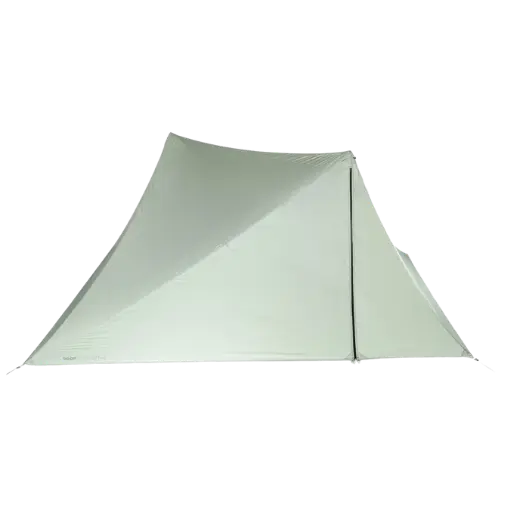
- The FASTEST tent to pitch on the market is my favorite tent for my outdoor trips!
- Incredibly spacious interior due to the unique outer and inner construction being a parallelogram instead of just squared off, allowing much taller people to fit!
The X-Mid 2P pitches with as little as two trekking poles and four stakes this makes it incredibly simple to pitch and get you ready to relax in comfort.
The X-Mid is a robust, roomy, and stormworthy boat, while anything lighter is smaller, less functional, and/or uses less durable materials.
The X-Mid 1 is roomy, simple to set up, and stormworthy for only 2.5 lbs (40oz / 1135 g). It performs well in the rain thanks to a fly-first pitch, full double-wall construction, no-sag poly fabric, large adjustable vents, factory seam taping, a full-coverage fly.
Unlike most trekking pole tents, the X-Mid features a straightforward 4 stake pitch that doesn’t require any guylines, struts, or measuring pole heights. With huge doorways that aren’t obstructed by poles and simple one-handed zipper operation, the user-friendliness continues after setup.
3F UL Gear Lanshan 2P (AKA Meir, AKA Flames Creed, etc)

- The 3F UL GEAR Lanshan 2 is a popular two-person tent that is among the most cost-effective ultralight tents available. The new 2021 version offers increased room to be more comfortable for taller individuals.
- The Lanshan 2 is built to last and is suited for all conditions and activities. It’s specially made for UL hikers.
Solo hikers will appreciate the perfect balance between internal space for rest and pack breakdown at night and its overall lightness.
With enough room for both and a separate entrance and vestibule for each, the Lanshan 2 can easily accommodate two people or one thru-hiker with all their gear inside.
The fly’ bottoms curved, allowing for continuous air circulation and the reduction of moisture buildup, which can be the bane of drying a tent out in the morning.
The tent body is a 5000mm waterproof PU coating over a silicone-treated nylon ripstop. All seams are sealed with waterproof, solvent-free polyurethane tape.
TarpTent Aeon Li
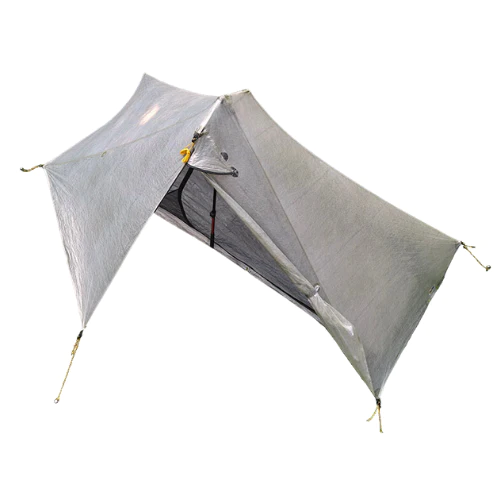
The Tarptent Aeon Li is a significant upgrade in design over other half-pyramid shelters. The two most important developments are as follows:
- The vertical back wall of the Tarptent design has a pair of foldable corners from Tarptent’s innovative PitchLoc™ technology to boost the volume and strength of the tent while keeping it small.
- The two front doors can be completely rolled back and the structural awning, together with the PitchLoc™ corners, is used to increase head/shoulder room and establish static equilibrium, allowing both front doors to be fully rolled back without the use of a forward guyline.
The world’s lightest and most protective tents are made from DYNEEMA®, allowing for greater weight savings along with superior strength, in addition, the tent comes fully taped and waterproof: 8,000mm+ hydrostatic head pressure rating.
Is it possible to make the Aeon Li smaller by stuffing it? The 5 carbon-fiber struts and aluminum cross pole are simple to remove, but I would recommend rolling or folding rather than stuffing to extend the cloth’s life.
The type of camping you intend to do and the conditions you anticipate will determine whether or not you require a groundsheet. Once the ground is clear of sharp objects, the 1-oz Dyneema flooring is durable and does not usually require a separate groundsheet.
TarpTent StratoSpire 2
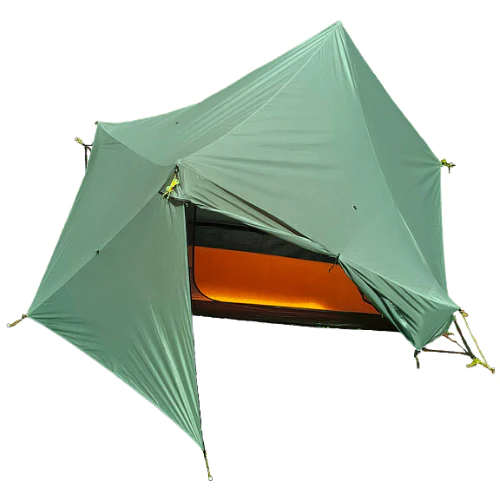
The Tarptent StratoSpire 2 is a two-person version of the StratoSpire 1 designed for single hikers to have more room.
- For trekking pole users, this shelter is a treasure: save weight and use your poles to establish a secure, wind and snow-resistant foundation.
- The StratoSpire’s unique, patent-pending design provides an enormous living and vestibule space perfect for the extensive gear a thru-hiker brings with them.
This tent is perfect for winter and summer conditions and has quickly become a favorite of the “fast & light” crowd.
The StratoSpire 2 comes with apex guylines preinstalled, which can be used to strengthen the ridgeline. It also includes fly-top pull-outs that may be guyed out in high winds and for snow loads. The tent has withstood severe thunderstorms and pouring rain without fail.
Gossamer Gear “The Two”
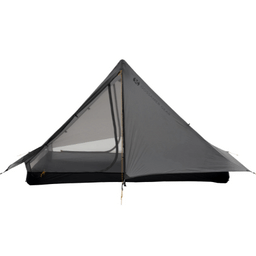
- The Two has the capacity to hold two people and is light enough for you to carry without weighing you down. The following are some of the features: pre-sewn seams, bright pull-outs, robust zippers, and fully rigged lines.
- The Two is also lightweight and simple to deploy, strong, roomy, and weighs less than 2 pounds. Both sides include doors for easy access and maximum ventilation.
The Two is lightweight, with full protection from rain and bugs, factory-taped seams and the main body and floor have 1800mm waterproof UTS coating.
It also features great headroom (and shoulder room) and is built to fit tall people while providing a big vestibule with great protection and easy side entry.
How to Choose a Tent for Your Thru-Hike
When you are deciding on what tent will work best for your thru-hike you have many things to consider all before making your important purchase, each item can be a make or break for you and your enjoyment while out on the trail.
For some this is going to be based on how it can fit in a backpack, others will worry about the weight as the highest importance. Some will gravitate towards freestanding tents over trekking pole-style tents, others may care more about the space or materials.
This is all why you want to understand all the factors and which ones will be the most important to you and your choice. Let’s jump into each and give you some information on what they are and why they would matter.
Tent Setup
There are three main types of tents that someone will have, freestanding, semi-freestanding, and trekking pole tents. Each of these has some pros and cons them but people are typically more comfortable with one of the three.
Freestanding – These tents require no tent stakes with the tent body and the rainfly ending along the tent body or the tent poles, there are not many options available in this type for backpacking use. Can be adjusted easily as you can pick up and move the entire tent without removing tent stakes for optimum camp placing.
Semi-Freestanding – Very similar to the above tents but that you have tent stakes which are used to tighten up the rainfly and give full protection to the tent and vestibule area. This can be easier to move around the camp area for best placement unlike the next option below.
Trekking Pole – This tent uses your trekking poles to stand upright, it has no ability to remain upright without the framework the trekking poles provide. This also makes re-adjusting and moving the tent a full breakdown and re-setup as the entirety of the tent is staked out to maintain shape.
Seasonality
As to seasonality, this will depend on when your majority of trips occur, there are a few options which are three-season, three-plus season, and four-season. Choosing which will fit your needs and the weather you will expect will change the way it holds heat and breathes.
Three Season
This style of tent will often feature a rainfly made of solid material and an inner tent material which will be made from a no-see-um mesh, this allows you the most airflow possible which is very important when camping in warmer temperatures.
Three-Plus Season
Similar to the above tent but the walls will typically be a mix of solid material to block out some airflow but the rest are made from no-see-um mesh to allow some airflow to continue through.
Four Season
This tent style will have solid walls both inside and outside, this will block out nearly all breezes and will help conserve warmth non-stop in all weather. This can be critical in winter but also if you hike up high into mountains where severe cold is typical, not always just snow or inclement weather.
Livable AKA Internal Living Space and Capacity
While you live out on the trail you will want to have a space you can retreat to for some peace and quiet at times, for some people this space can be near cocoon-like and small and cramped, for others they need the biggest space they are willing to carry.
Key Specs To Think About:
- Floor Dimensions – The length and width measurements give a general indication of the floor surface size. Many tents do not have completely rectangular floors, so you may see measurements like 85″ x 51″ / 43″ (L x W head/foot). A tapered floor provides shoulder and arm room while also saving weight by having a smaller foot.
- Floor Area – This figure measures the total floor space in square feet. While this number is useful for comparing tents, it isn’t a reliable metric when measuring how well the area is utilized.
- Peak Height – When you sit up, no one wants to bang their head. However, peak height is measured at a single point, so don’t rely on this metric alone to assess overall clearance. Your personal test pitch and validation is a far superior method of determining overall space.
- Wall Angles and Shape – This is a far more significant aspect of tent livability than peak height. The higher the walls are, the more open the interior of the tent will feel. If you can’t go to a store to test pitch tents, look at the pitch of a tent’s walls in online photos.
Tent Weight
The weight of your tent is important as part of the big three it is one of your core areas to drop weight from your overall base weight. So you will want to look into the specific keys below as to tent specs that you should see how you align with and are willing to carry.
Understanding Tent Specs:
- Minimum trail weight – The total weight of the tent body, rainfly, and poles (the bare necessities). You will probably add more tent-related items like stakes, and a footprint, but this is the best spec level for an overall comparison.
- Packaged weight – This is the total weight of all the components included in a purchase: body, rainfly, poles, stakes, stuff sack pole sack, instructions, and other items. The combined weight you’ll carry on the trek will be between this and the minimum trail weight listed above.
- Packed size – The amount of room a tent takes up in your backpack also has to do with how easy it is to manage in a pack. For couples, you can look to decrease the amount of space needed by separating components and having your spouse take only the poles and rainfly, for example.
Materials
There are many materials used to make tents, some provide more water resistance, others provide better costs. Let’s take a few minutes and discuss the three most common materials used in making tents:
- Dyneema or DCF – First discvered on sailboats this fabric has amazing abilities like the ability to withstand water, incredibly lightweight, and pretty durable which makes it good for tents but it comes at a solid premium in the costs.
- Sil-Nylon – The most common fabric used for backpacking tents, solid and dependable, the only large downside is that it abosorbs water over time and due to this it can sag and need to be tightened up after initial setup.
- Sil-Poly – Very similar to Sil-Nylon above but doesn’t absorb water so once setup you won’t have to worry about sagging from water absorbtion, though from my understanding this fabric is a little more expensive it is near in-line with Sil-Nylon.
How the Tent Fits in Your Backpack
This may be fairly small to some but how you want to load your backpack is important and some tents can be very tall when in their sack. This can be an issue if you prefer to put your tent horizontally, as is my preference, as this allows for a simple stacking of gear.

